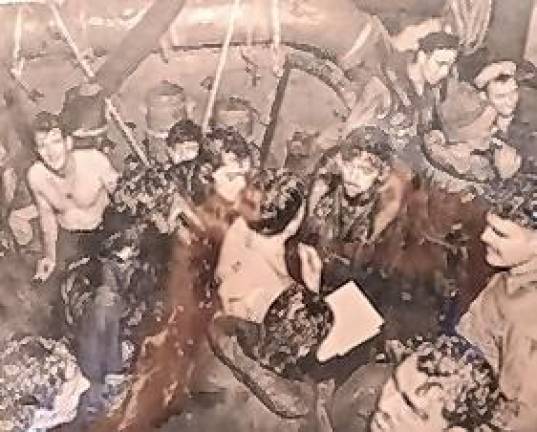
Earlier this week, we respectfully honored those who protected our nation from enemies. The holiday is known as Veterans Day.
I’d like to focus this year’s Veterans Day column on World War II. Those who fought to keep our freedom came from a variety of people. At the time, in the 1940s, most of those serving were men. There were longtime citizens of this country who served. The armed forces also contained many who were of newer citizenship, with ancestors having come from other countries as immigrants during the first quarter of the century.
This is a story of young men serving who came from such a family.
Sussex County is rich with many natural resources. Iron and zinc are two metals of great value to the modern world that have been found here. Many miners were needed to extract and process the ores. Here is where the Kajor family comes in. Their story is a common one in Franklin and is typical of our county’s populace.
Louis Kajor arrived at Ellis Island from Hamburg aboard the Deutschland and Marie Hathazi on the Hanover from Bremer. Both came in 1906 and both were Hungarians who like others arrived looking for a better life.
They met in Franklin and married in 1914 and lived in a small bungalow in an area that at that time contained so many Eastern European families that it was called “Siberia.” In this small home, they had eight children while Louis labored in the mines. The three girls stayed home and helped with the vegetable garden and the household. The five boys went off to war.
One son, Louis Jr., joined the Army Air Corps and was assigned to flying fuel to the troops in Burma and China in Southeast Asia. He became the first sergeant pilot to fly when they converted the B-24 Liberators bombers to C-109 cargo planes.
Other sons Joseph and Edward joined the Army. Paul enlisted just as the war was ending and became a carrier pilot for the Marines.
Alexander joined the Navy as a Gunner’s Mate First Class. In the Pacific Theater, he fought the Japanese aboard the light cruiser USS Marblehead.
During the Battle of Makassar Strait, she survived three waves of enemy bombers but a fourth wave caused her to suffer two direct bomb hits and a near miss. Fires swept the ship, she listed to starboard and began to settle by the bow.
Alexander helped put his shipmates onto life rafts while the Japanese planes were shooting at them. He sharpened a piece of wood to fend off sharks in the water. A few months later, he was on the light cruiser USS Helena in the extended Guadalcanal and Solomon Islands campaign.
In the Battle of Kula Gulf, when the Japanese “Tokyo Express” contingent of warships slipped down “The Slot,” they engaged the American force, which just successfully landed troops on an island. During the battle, the Helena was hit with three torpedoes and sank.
About two-thirds of the crew was in the water, some clinging to the sinking bow. After days in the water, the survivors were taken aboard a destroyer and brought back to Australia.
Remember those who gave so much - some gave all - to defend our freedom and our way of life.
Bill Truran, Sussex County’s historian, may be contacted at billt1425@gmail.com